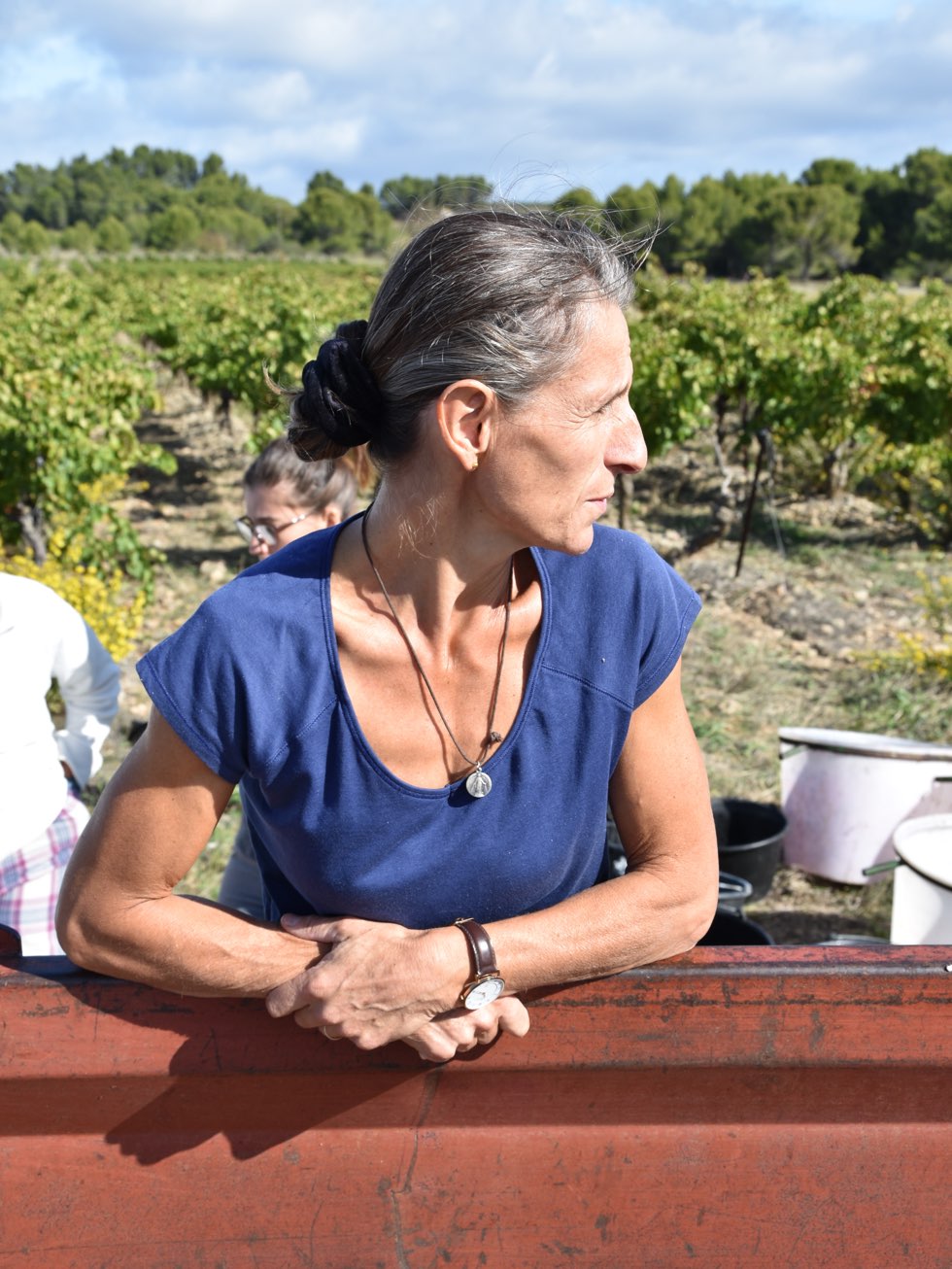We were referred to Bernard Boudouresques, the proprietor of this rustic estate situated in the heart of the Minervois, by the Gibert family of Domaine Faillenc Sainte-Marie, our source of wines from the Corbières district. Massiac and Faillenc are about 25 minutes distance, one from the other, along a series of pleasant, winding country roads and they share a rewarding simplicity in their approach to producing wines of character with a strong local identity.
The Château Massiac has a long history that dates back to the Roman Empire when this area was colonized by the Romans using the nearby Mediterranean port (30 kilometers) of Narbonne as an access point. In the 17th Century, two brothers from Massiac in the Auvergne region traversed the area in service to the King of Spain and eventually settled at this spot situated almost precisely halfway between the clock towers of the villages of Azille and Rieux Minervois. During the French Revolution, the “chateau” was burned to the ground.



Massiac encompasses 21.5 hectares of vineyards, 8.5 of which produce the Minervois Rouge and 5 of which are the source for the two white wines classified as Vin de Pays d’Oc.
Bernard Boudouresques and his family recently revived the domaine, planting vineyards and converting the estate to organic viticulture. Production from the estate is now (2012) certified organic. Massiac encompasses 21.5 hectares of vineyards, 8.5 of which produce the Minervois Rouge and 5 of which are the source for the two white wines classified as Vin de Pays d’Oc. The domaine lies at the extreme south of the Massif Centrale, effectively in the gently sloping foothills that lead to the Mediterranean coast which is not terribly distant. The subsoils are essentially limestone and clay with silex and marble infusions, all of which was formed during the Lutecian geologic era. This soil has particularly good drainage which accounts for the superior concentration that Massiac achieves in its wines. As well, the site is exposed both the winds that sweep north from the Mediterranean and the cooling northwest wind coming from the mountains known as Le Cers which consistently dries the vineyard and makes it less vulnerable to the maladies of the vine. At the moment (this is written in early 2012), Massiac bottles approximately 55,000 bottles of wine per annum.
Farming
Certified organic since 2012
Treatments
Copper sulfate only
Ploughing
Annual ploughing to maintain vineyard health
Soils
Limestone-clay, silt, and sand
Vines
Planted at 4-5,000 vines/ha, vines average 25 years old.
Yields
Controlled through pruning, debudding, and a green harvest when absolutely necessary, yields average 48 hl/ha for red wines and 55-70 hl/ha for white wines.
Harvest
Mostly mechanical, with some hand harvesting, usually in late September
PURCHASING
Entirely estate fruit
Fermentation
After total destemming, red wines ferment with selected yeasts in concrete vats. Cuvaison lasts 2-4 weeks. White wines ferment with selected yeasts in stainless-steel tanks.
Extraction
Red wines see pumpovers and racks-and-returns during cuvaison.
Chaptalization
None
Pressing
Pneumatic pressing. Half of crop for white wines is pressed whole cluster and half is destemmed and sees 6 hours of skin contact.
Malolactic Fermentation
Spontaneous, following alcoholic fermentation for reds, blocked by temperature for whites
Élevage
White wines and Cuvée Sentinelle age 6 months in stainless-steel tanks. Minervois rouge spends 20-24 months in concrete vats. Syrah Cuvée Esperance spends 18-24 months in used barrels from Saint Joseph.
LEeS
White wines remain on their lees until assemblage prior to bottling, with occasional bâtonnage. Red wines are racked off their lees following malolactic.
FINING & FILTRATION
White wines are fined with gum Arabic and see sterile plate filtration; red wines are unfined and see non-sterile plate filtration.
SULFUR
Applied after malolactic and at bottling for red wines; applied at harvest, after alcoholic fermentation, and at bottling for white wines.



